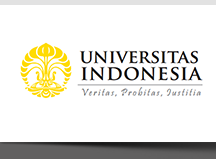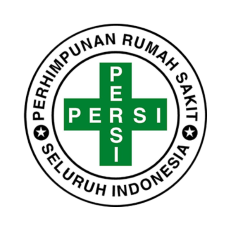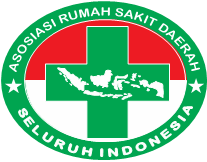Abstract
Patient safety incident reporting is a critical component of hospital quality systems. This study evaluated the implementation of a Quality Management Information System (QMIS) for incident reporting at Hospital X using the Structure–Process–Outcome (SPO) framework integrated with the HOT-Fit model. A mixed-methods case study was conducted, combining analysis of 774 incident reports submitted between March 2023 and December 2024 with in-depth interviews involving clinical staff, unit heads, and the Quality and Risk (QR) Manager. Findings revealed that while structural elements such as computing infrastructure and leadership support were in place, gaps remained in staff training, procedural awareness, and system usability. QMIS was actively used for reporting, but advanced features like root cause analysis (RCA) and dashboards were underutilized. Reporting performance was moderate, with 62.8% of reports submitted within 24 hours and a reporting rate of 22.03 per 1,000 patient days, below international benchmarks. Although some process improvements were implemented, feedback loops to frontline staff were limited. To enhance system effectiveness, technical improvements are recommended, including interface simplification, mobile access, data validation, and integration with hospital systems. Strengthening local support and fostering a learning-oriented safety culture is also essential to sustain engagement and improve patient safety outcomes.
References
Adriani, Z.A., Teguh Raharjo and Ni Wayan Trisnawaty (2024) ‘Comprehensive Examination of Risk Management Practices Throughout the Software Development Life Cycle (SDLC): A Systematic Literature Review’, Indonesian Journal of Computer Science, 13(3). Available at: https://doi.org/10.33022/ijcs.v13i3.4016.
Braithwaite, J. et al. (2017) ‘Association between organisational and workplace cultures, and patient outcomes: systematic review’, BMJ Open, 7(11), p. e017708. Available at: https://doi.org/10.1136/bmjopen-2017-017708.
Chi, J. and Hu, S. (2021) ‘Research on the Management Information System of Voluntary Medical Safety Adverse Event Reporting’, in 2021 3rd International Conference on Artificial Intelligence and Advanced Manufacture. New York, NY, USA: ACM, pp. 1801–1804. Available at: https://doi.org/10.1145/3495018.3495488.
Dawson, R. et al. (2022) ‘Leveraging a Safety Event Management System to Improve Organizational Learning and Safety Culture’, Hospital Pediatrics, 12(4), pp. 407–417. Available at: https://doi.org/10.1542/hpeds.2021-006266.
Decree of the Minister of Health No. HK.01.07/MENKES/1596/2024 on Hospital Accreditation Standards (2024). Available at: https://kars.or.id/daftar-regulasi/.
Donabedian, A. (2003) An Introduction to Quality Assurance in Health Care. Oxford University Press. Available at: https://global.oup.com/academic/search?q=An+Introduction+to+Quality+Assurance+in+Health+Care&cc=id&lang=en.
Goekcimen, K. et al. (2022) ‘Addressing Patient Safety Hazards Using Critical Incident Reporting in Hospitals: A Systematic Review’, Journal of Patient Safety [Preprint]. Available at: https://doi.org/10.1097/PTS.0000000000001072.
Gong, Y. et al. (2015) ‘Identifying barriers and benefits of patient safety event reporting toward user-centered design’, Safety in Health, 1(1), p. 7. Available at: https://doi.org/10.1186/2056-5917-1-7.
Hibbert, P.D. et al. (2023) ‘Comparing rates of adverse events detected in incident reporting and the Global Trigger Tool: a systematic review’, International Journal for Quality in Health Care, 35(3). Available at: https://doi.org/10.1093/intqhc/mzad056.
Hustoft, M. et al. (2018) ‘Communication and Relational Ties in Inter-Professional Teams in Norwegian Specialized Health Care: A Multicentre Study of Relational Coordination’, International Journal of Integrated Care, 18(2). Available at: https://doi.org/10.5334/ijic.3432.
Jebraeily, M. et al. (2019) ‘Using SERVQUAL Model to Assess Hospital Information System Service Quality’, Hormozgan Medical Journal, 23(1), p. e86977. Available at: https://doi.org/10.5812/hmj.86977.
Kepner, S. and Jones, R. (2025) ‘Patient Safety Trends in 2024: An Analysis of 315,418 Serious Events and Incidents From the Nation’s Largest Event Reporting Database’, PATIENT SAFETY, 7(2). Available at: https://doi.org/10.33940/001c.133876.
Koskiniemi, S. et al. (2024) ‘Health professionals’ perceptions of the development needs of incident reporting software: A qualitative systematic review’, Journal of Advanced Nursing, 80(9), pp. 3533–3546. Available at: https://doi.org/10.1111/jan.16106.
Law No. 17 of 2023 on Health (2023). Indonesia. Available at: https://peraturan.bpk.go.id/Details/258028/uu-no-17-tahun-2023.
Lee, S.E. and Dahinten, V.S. (2020) ‘The Enabling, Enacting, and Elaborating Factors of Safety Culture Associated With Patient Safety: A Multilevel Analysis’, Journal of Nursing Scholarship, 52(5), pp. 544–552. Available at: https://doi.org/10.1111/jnu.12585.
Macrae, C. (2016) ‘The problem with incident reporting’, BMJ Quality & Safety, 25(2), pp. 71–75. Available at: https://doi.org/10.1136/bmjqs-2015-004732.
Martin, G. et al. (2024) ‘Professionalising patient safety? Findings from a mixed-methods formative evaluation of the patient safety specialist role in the English National Health Service’, Journal of Health Services Research & Policy, 30(1), pp. 40–51. Available at: https://doi.org/10.1177/13558196241268441.
Mitchell, I. et al. (2016) ‘Patient safety incident reporting: a qualitative study of thoughts and perceptions of experts 15 years after “ To Err is Human ”’, BMJ Quality & Safety, 25(2), pp. 92–99. Available at: https://doi.org/10.1136/bmjqs-2015-004405.
Pettersen, S., Eide, H. and Berg, A. (2024) ‘The role of champions in the implementation of technology in healthcare services: a systematic mixed studies review’, BMC Health Services Research, 24(1), p. 456. Available at: https://doi.org/10.1186/s12913-024-10867-7.
Regulation of the Minister of Health No. 11 of 2017 on Patient Safety (2017). Indonesia. Available at: https://jdih.baliprov.go.id/uploads/produk-hukum/peraturan/2017/PERMENKES/permenkes-11-2017.pdf.
Regulation of the Minister of Health No. 24 of 2022 on Medical Record (2022). Indonesia. Available at: https://peraturan.bpk.go.id/Details/245544/permenkes-no-24-tahun-2022.
Saefulmilah, H. et al. (2024) ‘Peningkatan Mutu Keselamatan Pasien Melalui Digitalisasi Pelaporan Insiden Keselamatan Pasien’, Journal of Telenursing (JOTING), 6(2), pp. 2156–2163. Available at: https://doi.org/https://doi.org/10.31539/joting.v6i2.11833.
Song, J. and Guo, Y. (2019) ‘What influences nursing safety event reporting among nursing interns?: Focus group study’, Nurse Education Today, 76, pp. 200–205. Available at: https://doi.org/10.1016/j.nedt.2019.02.010.
Soularto, D.S., Arini, M. and Listiowati, E. (2022) ‘DIGITAL SYSTEM PELAPORAN INSIDEN KESELAMATAN PASIEN DI RUMAH SAKIT’, Prosiding Seminar Nasional Program Pengabdian Masyarakat [Preprint]. Available at: https://doi.org/10.18196/ppm.43.635.
Tagne, J.F. et al. (2023) ‘A Web-Based Tool to Report Adverse Drug Reactions by Community Pharmacists in Australia: Usability Testing Study’, JMIR Formative Research, 7, p. e48976. Available at: https://doi.org/10.2196/48976.
Tartaglia, R. (2021) ‘Brief Story of a Clinical Risk Manager’, in Textbook of Patient Safety and Clinical Risk Management. Cham: Springer International Publishing, pp. 19–28. Available at: https://doi.org/10.1007/978-3-030-59403-9_2.
Tsamasiotis, C. et al. (2024) ‘From Reporting to Improving: How Root Cause Analysis in Teams Shape Patient Safety Culture’, Risk Management and Healthcare Policy, Volume 17, pp. 1847–1858. Available at: https://doi.org/10.2147/RMHP.S466852.
Van Dongen, D. et al. (2024) ‘Classification of influencing factors of speaking-up behaviour in hospitals: a systematic review’, BMC Health Services Research, 24(1), p. 1657. Available at: https://doi.org/10.1186/s12913-024-12138-x.
World Health Organization (2021) Global Patient Safety Action Plan 2021–2030: Towards Eliminating Avoidable Harm The Health Care. Available at: https://www.who.int/publications/i/item/9789240032705.
Yusof, M.Mohd. et al. (2008) ‘An evaluation framework for Health Information Systems: human, organization and technology-fit factors (HOT-fit)’, International Journal of Medical Informatics, 77(6), pp. 386–398. Available at: https://doi.org/10.1016/j.ijmedinf.2007.08.011.
Zhou, L. et al. (2019) ‘The mHealth App Usability Questionnaire (MAUQ): Development and Validation Study’, JMIR mHealth and uHealth, 7(4), p. e11500. Available at: https://doi.org/10.2196/11500.
Bahasa Abstract
Pelaporan insiden keselamatan pasien merupakan komponen penting dalam sistem mutu rumah sakit. Studi ini mengevaluasi implementasi Sistem Informasi Manajemen Mutu (SIMM) untuk pelaporan insiden di Rumah Sakit X menggunakan kerangka kerja Struktur–Proses–Hasil (SPO) yang diintegrasikan dengan model HOT-Fit. Penelitian studi kasus dengan metode campuran dilakukan dengan menganalisis 774 laporan insiden yang dikirimkan antara Maret 2023 hingga Desember 2024, serta wawancara mendalam dengan staf klinis, kepala unit, dan Quality and Risk (QR) Manager. Hasil menunjukkan bahwa meskipun elemen struktural seperti infrastruktur komputer dan dukungan pimpinan telah tersedia, masih terdapat kesenjangan dalam pelatihan staf, pemahaman prosedur, dan kemudahan penggunaan sistem. SIMM digunakan secara aktif untuk pelaporan, namun fitur lanjutan seperti analisis akar masalah (RCA) dan dasbor belum dimanfaatkan secara optimal. Kinerja pelaporan tergolong sedang, dengan 62,8% laporan dikirimkan dalam 24 jam dan tingkat pelaporan sebesar 22,03 per 1.000 hari pasien di bawah tolok ukur internasional. Meskipun beberapa perbaikan proses telah dilakukan, umpan balik kepada staf lini depan masih terbatas. Untuk meningkatkan efektivitas sistem, disarankan adanya perbaikan teknis, termasuk penyederhanaan antarmuka, akses seluler, validasi data, dan integrasi dengan sistem rumah sakit. Penguatan dukungan lokal dan pengembangan budaya keselamatan yang berorientasi pada pembelajaran juga penting untuk mempertahankan keterlibatan dan meningkatkan hasil keselamatan pasien.
Recommended Citation
Jeremia, Andrew and Nadjib, Mardiati
(2025)
"Implementation of Patient Safety Incident Reporting Using Web-Based Quality Management Information System in Hospital X Tangerang,"
Jurnal ARSI : Administrasi Rumah Sakit Indonesia: Vol. 11:
No.
2, Article 4.
DOI: 10.7454/arsi.v11i2.1217
Available at:
https://scholarhub.ui.ac.id/arsi/vol11/iss2/4
Included in
Health and Medical Administration Commons, Other Medicine and Health Sciences Commons, Public Health Commons







